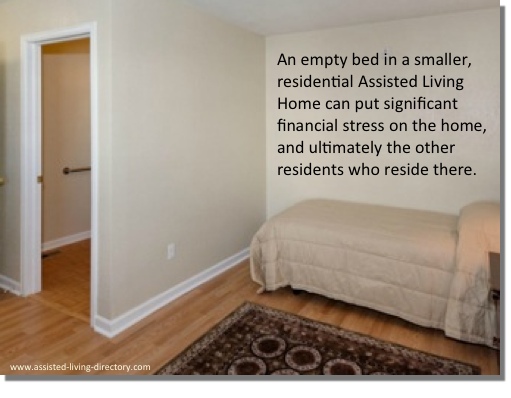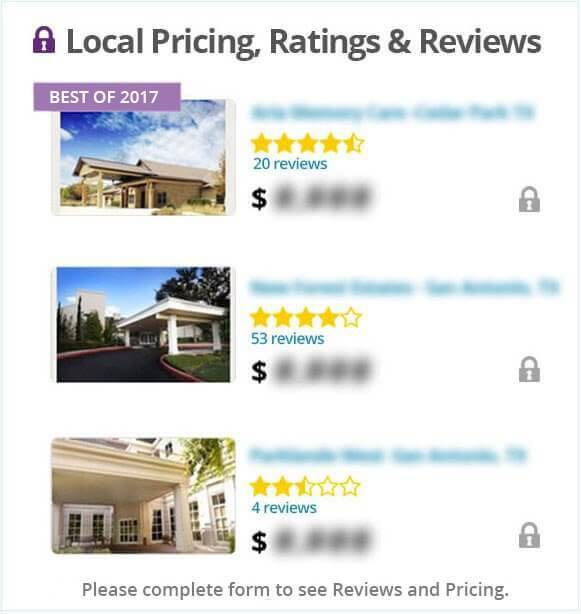One of the considerations that is often at the forefront for any family or senior researching assisted living is facility size.
I’ve written a lot about facility size, and how it can impact a resident’s happiness. I’ve also interviewed facility owners on the benefits of smaller assisted living homes.
Of course, smaller homes are more intimate, and homelike, and can be much less intimidating than a larger, more corporate-feeling facility.
However, in the many times I’ve visited smaller residential assisted living homes (usually to do an interview, or a video tour), I’ve seen first-hand what some of the disadvantages can be.
This does not apply to all small, neighborhood facilities, but these are things you may want to be aware of, or consider if you are leaning in the ‘smaller’ direction.
1) Small, residential homes can often be self-financed, without a lot of venture capital, or reserves to ‘float’ the facility in lean times.
I visited a facility about a month ago – a beautiful home in a quiet cul-de-sac. This home had only one resident, with a capacity of 6.
That’s tens of thousands of dollars worth of ‘rent’ that the facility is having to cover each month.
I learned that this facility’s owners were dipping into their own 401K’s to cover the costs.
The implications of this can be distressing. Is the one resident getting the care she needs, or are finances so that the facility is cutting corners?
Or, will the facility accept any new resident, regardless of health, condition or the home/facility’s capacity to care for him or her appropriately.
If new residents cause even further strain on the home in terms of costs, health maintenance, and the resident’s ability to pay each month, this can further distress the home, and all residents.
2) Smaller homes can care facilities are often times subject to the whims and pettiness of the local neighborhood’s HOA.
HOA’s can be a good thing, but if they are run by a management company and board members who are petty, ill-qualified, or overbearing, then running a business in a neighborhood can be a struggle.
The more time owners spend haggling with a Homeowner’s Association about parking, visitation or weeds, the less time they have to devote to residents.
The home I visited last month was giving the facility a very hard time about family members parking on the street when the come to visit their loved ones in the facility.
There was no clear-cut solution to this.
3) Can smaller care homes allow residents to age in place better than larger assisted living facilities?
This comes back to, in some ways how deeply-pocketed the home is. If the facility or home is in financial distress, then naturally, the range of services and possibly staffing could be compromised.
If mom, or dad goes from just needing assistance with the Activities of Daily Living (ADL’s) to full-blown Alzheimer’s, the facility may not be well-equipped to handle that.
This is where larger facilities may have the advantage, with a larger staff, more financial resources, and the ability to weather the ups and downs of business or filled-beds.
4) Staffing can be tricky in a smaller home.
The home I visited last month had one resident, and one RN on staff. I know first hand from working in the hospitality industry for many years that the difference between a good or bad day can depend entirely on whether your staff shows up, and are not sick, hungover, or disgruntled.
The more staff you have (larger facilities) the more opportunity you have to keep the best, and weed out the rest, and absorb those days where one or more of your staff decides to not show up for work.
5) Smaller assisted living homes are often a 365 day-per-year job.
I’ve visited with, and have heard about so many owners of assisted living homes that don’t get time off – ever. They are ‘trapped’ by their dream of running an assisted living home.
Since staffing in these homes are so thin, these owners often have to fill-in-the-blanks every day with different tasks, and wearing different hats.
There’s constant accounting, marketing, family drop-bys, sick residents, mechanical or repair problems, staffing difficulties, surprise inspections by the State, and millions of other unforeseen issues.
This can certainly lead to burnout, decreased focus, mistakes and at times, a closed facility/home.
Almost daily I see news alerts regarding small assisted living home owners or administrators essentially ‘tossing their hands in the air’ and quitting. There have been stories recently of seniors and residents left behind to fend for themselves.
This would be an unlikely scenario in a larger facility.
A well-run, well, backed residential or neighborhood assisted living home can be a wonderful place for mom or dad to live.
They are cozy, home-like, un-industrial feeling in nature, and quite appealing to those who don’t respond well to a crowd scene.
However, due diligence, good questions and research with some of the above issues and scenarios in mind is essential.
Don’t just trust the glossy brochure or the ‘word’ of the facility owner.
You wouldn’t know it from looking at them from the street, but a percentage of these homes are unfortunately teetering on the brink.



